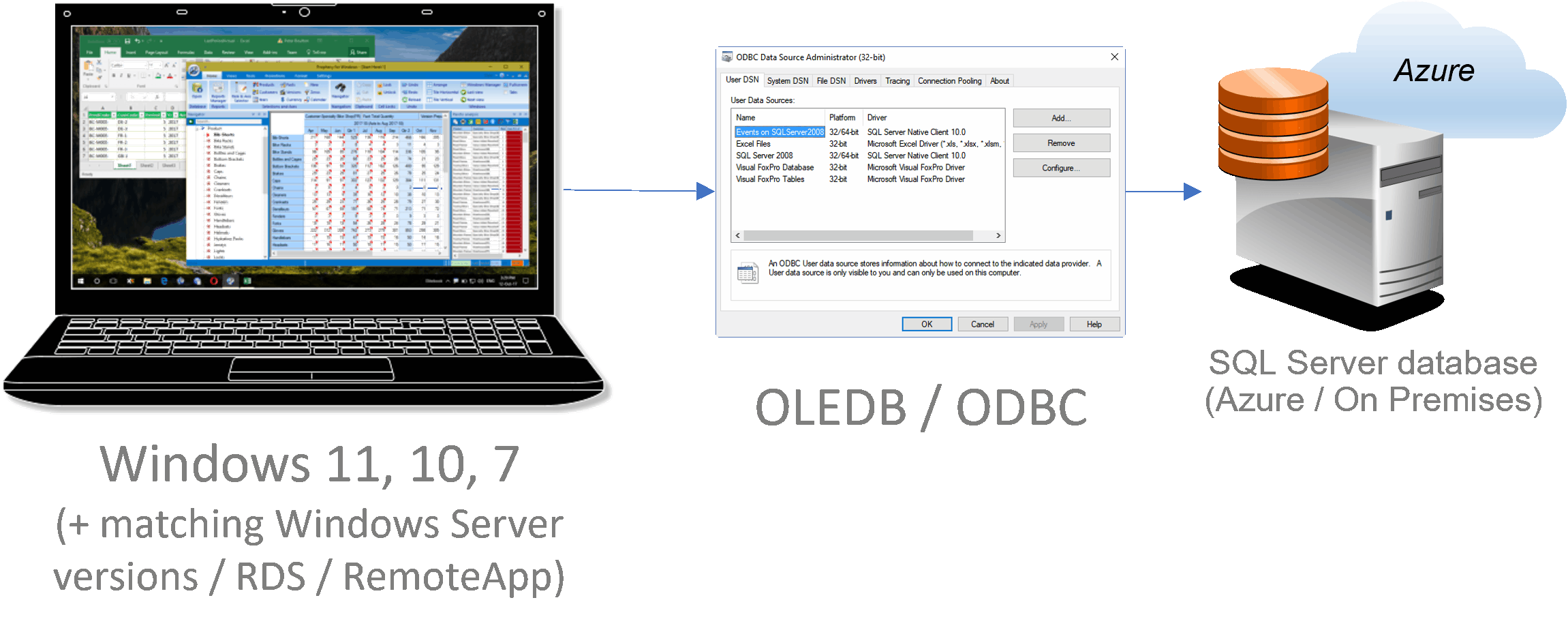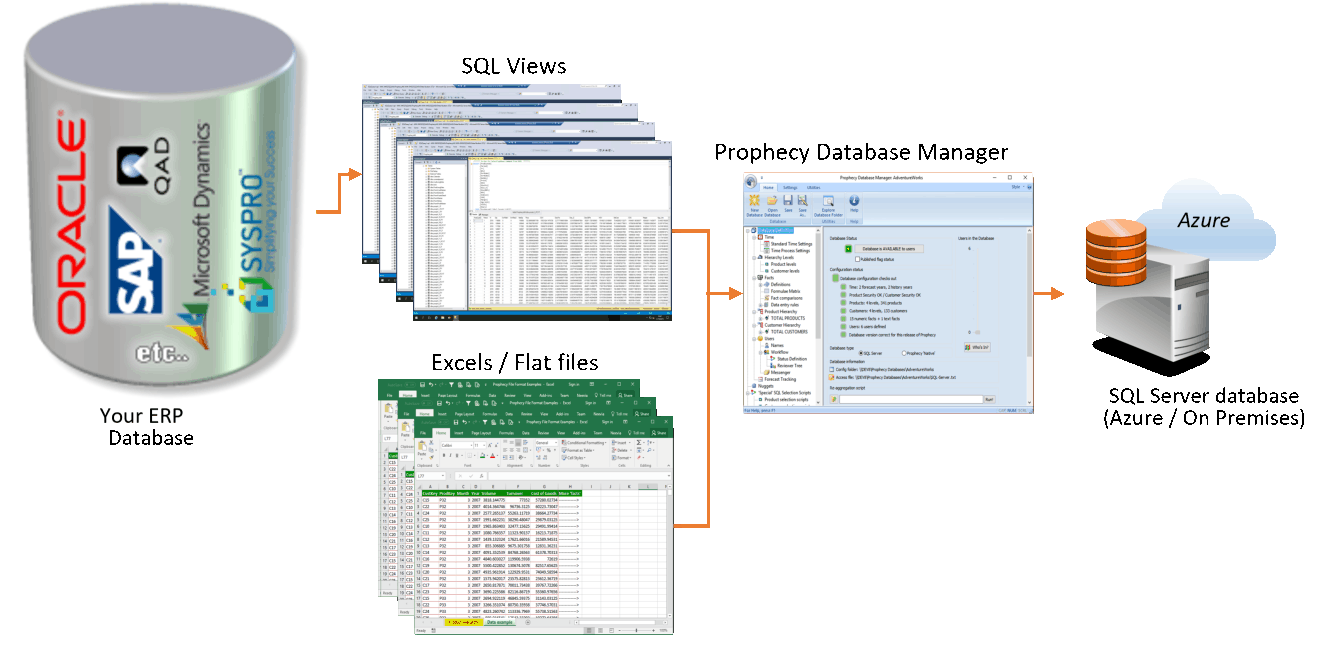Prophecy - Architecture
Summary
- Prophecy runs on all current versions of Windows, including Windows 11 and on corresponding Windows Server releases. Server delivery can be via Remote Desktops / RemoteApp or local installation of the Prophecy application on each user's computer.
- A Prophecy database consists of:
- A shared network folder, containing database definition files, Prophecy import and maintenance script files etc..
- A Microsoft SQL Server database, containing all the history and forecasts.
This architecture is shown here:

- A Prophecy database is disconnected from and has no dependencies on your ERP / business systems, other than being refreshed with actuals, material costs etc. via SQL queries (or simple delimited text files) in Prophecy scripts.
- Once a Prophecy database has been implemented it will require minimal IT involvement or resource to maintain, other than standard network and SQL Server backups. The ideal Prophecy database manager is a business person with some numeracy / IT skills. Routine database management will normally consume no more than half a day a month at most.
System Requirements
Database
- Prophecy data is stored in a Microsoft SQL Server database. Any version from SQL Server 2008R2 or later is supported.
- We also have Prophecy customers hosting their Prophecy databases on an Azure SQL Managed Instance.
- Most Prophecy databases don’t grow much bigger than a few gigabytes.
User Sessions
- Users can run the Prophecy Client application directly from their Windows computers or through a Remote Desktop / RemoteApp session.
- The Prophecy Client applications connect to a Prophecy database using a shared network folder containing the database access and configuration files. They use standard SQL Server ODBC / OLEDB database drivers to connect to the SQL Server hosting the Prophecy database via a 'client access file' located in the shared network folder. The user is never exposed to the connectivity complexity as a Prophecy client access file contains all the necessary connection data.
Populating Prophecy from Your ERP Systems

- The Prophecy Management Studio application uses stored database connections and SQL queries to extract data from any data source that supports standard ODBC database connectivity.
- Some customers create and populate a ‘staging database’ for Prophecy which is refreshed with the latest data each night. This removes daytime load on the source ERP system. Alternatively, as the queries required to populate Prophecy are generally low impact, the data can be pulled into Prophecy directly from the ERP database host tables.
- Typically, IT expertise is required during the implementation phase to identify and supply the source data tables, views and queries required to populate Prophecy.
Additional IT Involvement Required for a Prophecy Implementation
- Software installation (via industry standard installers).
- Provision of a Remote Desktop / RemoteApp environment to support Prophecy.
- Provisioning of a SQL Server instance, with necessary Windows Authentication for the Prophecy users.
- Creation and ongoing maintenance of a standard server backup / SQL Server backup process to comply with your organisation’s standards. (N.b. Prophecy maintenance scripts can take complete snapshot backups of a Prophecy database, including the SQL Server elements, and can also fully restore a Prophecy database. Therefore, the database manager is normally completely independent of IT in the event that a backup or restore is required.)
